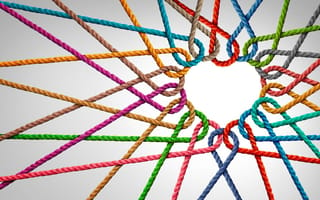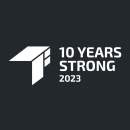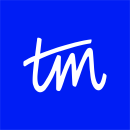The theme for this year’s Hispanic Heritage Month is “Unidos: Inclusivity for a Stronger Nation.” Carried within that theme is the idea that supporting diversity in a community ultimately makes that community richer.
That’s true on the macro level — the nation is enriched by supporting diversity — but it’s also true on the micro level, with organizations and employers. A report by Washington State University cataloged several benefits of a diverse workplace, including increased talent retention, creative problem solving and overall improved financial performance. As such, it’s a benefit to both employee and employer to nurture diversity at their job.
Enter the ERG.
Employee Resource Groups come in a variety of shapes — some support women, BIPOC or LGBTQA+ employees; some help chronically ill and neurodivergent team members advocate for themselves; and others provide solidarity for parents in finding work-life balance. No matter what group the ERG is dedicated to, they ultimately serve the same goal: To be a voice for equity, inclusivity and education.
“Leaders and members of ERGs use their valuable time to ensure that there is a community that properly represents their individual ethnic or cultural experiences,” said Jenni Ruiz, senior marketing manager at freight management company Transfix. “And that alone can be the push that an employee may need to be motivated to push themselves to new heights.”
Built In NYC spoke to Ruiz, along with DEI and ERG leaders from six other companies, to learn about what makes an ERG successful — including what companies need to do to support these groups.
Tapestry, a global house of fashion brands that includes Coach and Kate Spade New York, is embracing the theme of this year’s Hispanic Heritage Month by launching their Hispanic and Latino ERG. This is their fifth ERG at the company, so they are no stranger to making them work.
In your experience, what is required to make an ERG program successful?
A critical first step towards success for any ERG is strategic alignment to the enterprise’s Equity, Inclusion and Diversity (EI&D) strategy. Tapestry’s EI&D strategy is grounded in our purpose and values and focuses on four principles: talent, culture, community and marketplace. While our ERGs represent a variety of identity groups, their strategies align to these same four principles. This enables progress that is equitable and focused toward a singular strategic vision.
Once the groups are up and running, there are two practical components I consider essential to ERG program success. The first is executive leadership support — it adds credibility to the ERG and signals that its contributions are valuable. The second component is KPIs that showcase progress and value. Metrics can be quantitative — such as membership growth — or qualitative — such as feelings of inclusion. At Tapestry we use an inclusion index, which is part of engagement surveys we deploy throughout the year. The data we collect includes respondent membership in ERGs, which makes it easy for us to form a correlation between ERG membership and inclusion.
What are some common mistakes companies make when implementing ERGs?
One common mistake is not providing adequate resources to set the ERGs up for success. A proper budget enables ERGs to invest in member engagement, external thought leadership and philanthropy.
We provide our ERGs with annual budgets that are aligned to their membership size for engagement and development programs, and cash bonuses are awarded annually to ERG leadership teams in recognition of the impact they’re driving within the organization. Through the Tapestry Foundation, ERGs are also provided with an annual stipend to grant to non-profit organizations whose mission and purpose align with that of the respective ERG.
Subject matter expertise is another important resource, so our EI&D team provides our ERGs with toolkits and resources to make it easy for them to operationalize their plans and minimize administrative burden. Similarly, our communications team supports them with asset creation, copy editing and management of varying communication platforms.
Executive leadership support adds credibility to the ERG and signals that its contributions are valuable.”
How are your team members and related ERGs celebrating Hispanic Heritage Month this year?
Hispanic Heritage Month at Tapestry will be a monumental one as we gear up to launch our fifth ERG serving the Hispanic and Latino community. The ERG evolved from a task force of employees across brands that came together last year to plan Tapestry’s inaugural Hispanic Heritage Month celebration, which included employee highlights and an unscripted conversation with the esteemed Puerto Rican author, Esmeralda Santiago. This year we plan on using the Hispanic Heritage Month 2022 theme — “Unidos: Inclusivity for a Stronger Nation” — to continue shining a light on the diverse and vibrant Hispanic and Latino community. As the nation’s second largest ethnic group, Latinos are literally reshaping national demographics. At Tapestry, we see this as an opportunity to nurture our enduring connection with our customers and future talent. Through the Coach Foundation’s Dream It Real program, whose mission is to empower the next generation to reach their full potential through higher education, we partnered with the Hispanic Scholarship Fund to provide 150 Coach Dream It Real scholarships for Latino students.

For Hispanic Heritage Month this year, freight management marketplace Transfix’s SOMOS@ ERG has organized a conversation with a Latino truck owner-operator — someone incredibly relevant to their business.
In your experience, what is required to make an ERG program successful?
ERGs require a significant amount of work to be deemed successful. First, you need a solid group of chairs to lead the charge. If I were to give three non-negotiables for the DNA of a successful group of chairpeople, they would be organizational skills, creative thinking and the innate ability to rally.
I’d also recommend a solid mission statement that chairs can use as their north star when it comes to planning out their year or quarter of events. The mission statement, specifically in its first and second years, can be fluid — what’s most important is that you check in with your members every now and then to ensure that the mission statement still accurately describes what the ERG embodies.
Lastly, executive and managerial involvement is critical. Showing up to an open-invitation ERG meeting or hosted event leaves members feeling appreciated and respected, and leaders may also walk away having learned something new. And what’s a better way to feel connected to your employees than that?
What are some common mistakes companies make when implementing ERGs?
One of the most common mistakes companies make when implementing ERGs is not carving time out for them in town halls or all hands meetings. It’s important to provide a platform for visibility — everyone at the company should have a good understanding of what each ERG is up to.
Another common mistake I’ve witnessed is the misconception that ERGs are more of a luxury or time out for employees who may be looking for a break. That couldn’t be further from the truth. ERGs often serve as the driving force for real change in an organization.
ERGs often serve as the driving force for real change in an organization.”
How are your team members/related ERGs celebrating Hispanic Heritage Month this year?
Our SOMOS@Transfix ERG has a full lineup of events happening to celebrate Hispanic Heritage Month. The planning, coordination, creativity and execution we achieved wouldn’t have been possible without this ERG. Our suite of events includes: a paint-and-sip night of a beautiful Hispanic-inspired portrait, a tequila tasting event that will be equally educational and delicious, a Spanish 101 class where the company is invited to learn Spanish basics in a competition where proceeds will be donated to a Hispanic charity and a fireside chat with a Latina truck owner-operator — incredibly relevant to our business.
Throughout the month, we’ll also cater a weekly lunch in our NYC and Atlanta offices from Latino-owned and inspired establishments and share daily highlights to spread education across the company about Hispanic countries and culture.
As a Latina and Diversity, Equity, Inclusion and Justice (DEIJ) Committee member, I’m so proud of not just SOMOS@ but all of our ERGs. They’ve put in so much effort to create inviting, educational and fun programming. The group of leaders within each of our ERGs cross-collaborate, support one another and help each other promote events and membership. Frankly, our company is better because of our ERGs.

As publisher of a wide variety of brands, including Simply Recipes, Investopedia and Entertainment Weekly, People Inc. benefits substantially from diversity of thought in its organization. As such, DEI Manager Lesley Robinson emphasizes that ERGs are a resource not just for employees, but employers as well.
In your experience, what is required to make an ERG program successful?
ERGs need clear missions and visions that match the needs of their members, which requires some pre-planning and surveying.ERGs also need to be provided with the space to authentically represent the affinities they serve. When they are given that autonomy, they are able to be creative while meeting the needs of their communities and creating an internal brand that supports the company.
At People Inc., ERGs have a liaison from within the Diversity, Equity and Inclusion team that acts as a resource and support to ERG leadership as they navigate engaging the company and its employees.
What are some common mistakes companies make when implementing ERGs?
Companies commonly mistake ERGs for clubs. Everyone who actively participates in or leads an ERG is an employee with other important responsibilities — they join their respective ERGs because they see a need and understand the value of community. When they are treated like clubs, it devalues the work that they do and the contributions they make toward the company’s goals for employee retention.
ERGs aren’t only a resource for employees, they are a resource for the business. They provide ideas and solutions that improve the company and serve its customers.
ERGs need to be provided with the space to authentically represent the affinities they serve.”
How are your team members/related ERGs celebrating Hispanic Heritage Month this year?
Every year People Inc. celebrates Hispanic Heritage Month to recognize the achievements and contributions of Hispanic trailblazers who have inspired others to achieve success.
This year, we are hosting various events that celebrate our Hispanic employees and their culture. We’ll be learning cultural dances, reading books by Hispanic authors and watching shows with Hispanic actors. Though it’s only a month, we will continue celebrating the Hispanic community and its culture all year long.
As co-head of cloud platform DigitalOcean’s LGTBQ+ ERG, Rae Lewis-Krisy knows what ERGs need to function. Namely: Funding and active support from leadership. “Leadership must continuously invest time and money in the ERG program and its people,” she said. Here’s what else she had to say:
In your experience, what is required to make an ERG program successful?
To create a successful ERG program, it is essential for leadership to have a deep, emotional connection to the people they’re serving. If you personally care about the issues, people and needs that are important to your ERG, then you will be far more motivated to work towards your goals and far less defeated when you hit roadblocks. ERGs are a lot of work and community building takes a lot of time, so my fear of burning out can almost be haunting. But it’s that deep internal drive to cultivate a safe and supportive environment for my friends and coworkers that makes the work worth doing.
Furthermore, it’s not just event programming that has been important — social activities are what has made our ERG thrive. Remote work is a regular strain on our life balance, so creating environments where people get together — even in a virtual space — has made our ERG a lot stronger. Fostering our community allows our people to show up, learn and connect.
What are some common mistakes companies make when implementing ERGs?
The number one thing that a company needs to do when implementing new ERGs is to provide funding. Without funding, it’s almost impossible to organize events with speakers, build external relationships or entice people to attend social gatherings. It’s also important to make it easy for ERGs to spend that money. Even with proper funding, excessive processes and justifications can make it impossible to spend the money allocated to the ERG in the first place. You and your ERG collectively work to organize something great, only to be faced with hurdles and hoops? That would be discouraging, to say the least.
Secondly, a company and its executive leaders must offer support with actions, not just words. Allyship is a verb, not an adjective. Action means encouraging and paying for impactful programming, sharing the workload, having difficult discussions, advocating for those with less power at the company, reflecting on your own perspectives and biases and listening to those with different experiences than yourself. Leadership must continuously invest time and money in the ERG program and its people.
Allyship is a verb, not an adjective.”
Describe a recent event that one of your ERGs spearheaded. What was the occasion, and how did your broader team participate?
Pride month! It’s one of the biggest events of the year for the LGBTQ+ community. Historically it was a time to march and protest — but our ERG had to figure out what Pride month meant for us at DigitalOcean, a global remote company.
My co-lead and I created a Pride Committee with 15 ERG members who cared to organize initiatives for the month. We wanted the committee to have agency over their work for Pride month, so we created a space where people had a voice and could volunteer for their passions. Our committee led six events including queer-themed D&D, a speaking panel about the trans experience in the workplace and a virtual volunteering event where we sent 40 letters and donated $400 to the nonprofit Point of Pride. We fundraised $3,525 with DigitalOcean’s match program and donated $10,000 from our Social Impact team to five LGBTQ+ charities. We also shared Pride stories from our coworkers on social media. Just to name a few.
With this committee we lived the adage that many hands make for light work. Our events and initiatives were impactful because of our ERG members and wider DigitalOcean community. Because we really are that: A community.
Jill Gibson, VP of Talent and Inclusion at mobile restaurant company Wonder, provides several concrete examples of ways ERGs can support the company’s DEI mission. These include tapping into their network to recruit diverse talent and providing sensitivity reading for marketing campaigns.
In your experience, what is required to make an ERG program successful?
ERGs are most effective in fostering an inclusive and engaging culture in an organization when they are employee-led. Each group needs to be born out of a desire of an individual or group to support colleagues around a common purpose — whether it is creating community based on shared experiences or cultures, volunteering together, joining forces around areas of passion or helping one another professionally. Regardless of the purpose, ERGs need to be shaped and led by team members who are not just passionate about the mission but willing to roll up their sleeves and truly commit the time to execute against it.
But this is only half of the equation. The other vital component is that the ERG, once established, must be supported by the company. An employer can do this by providing guidance and resources on structuring the ERG, providing financial resources to enable the ERG to execute its programming, championing its efforts through leadership sponsorship and providing communication channels to promote the ERG and its activities.
What are some common mistakes companies make when implementing ERGs?
Companies often don’t devote sufficient people resources — individuals whose job is tied to the success of the ERGs — to guide leaders on how to effectively lead and engage others. ERGs are sometimes led by volunteers who may not have considerable experience driving participation with large groups of people — especially members who have pressing business commitments from their day job competing for their time. Leading an ERG can be like herding cats, and companies need to provide ample support structures for it.
I’ve also seen some companies fail to recognize how valuable the ERGs can be in helping them to carry out their mission. For example, ERGs often have a desire to support recruiting diverse talent to the organization — and can play a meaningful role by tapping into their personal networks and supporting candidates throughout the recruiting process — but are often overlooked to help. Similarly, we have all seen too many instances where companies are embarrassed because they offended a particular community with a marketing campaign — and the world has wondered why the company didn’t avoid the faux pas by consulting with their ERGs first.
ERGs need to be shaped and led by team members who are not just passionate about the mission, but willing to roll up their sleeves and execute against it.”
How are your team members/related ERGs celebrating Hispanic Heritage Month this year?
For Hispanic Heritage Month, our ERGs are leading several activations designed to foster community across the enterprise. For example, they are hosting a multitude of BBQs, family meals and happy hours at our different offices and introducing team members to music from the Hispanic and Latino community.

As Spring Health is focused on finding the right approach to mental health care for each person, it makes sense that Michelle Rojas, their associate DEI director, would empathize with the difficulties ERG directors — often women or minorities — already face in the workplace. To counter this, Rojas emphasizes the need for companies to guide and advise these leaders.
In your experience, what is required to make an ERG program successful?
ERGs must be organically formed by team members around a shared interest, background or identity. The company is responsible for nurturing that organic community by providing the resources necessary for sustained engagement. In order for ERGs to remain successful, it’s essential to provide their leaders with the resources — including financial resources, human capital, company recognition programs and opportunities for professional development — to achieve their north star goals. Our ERGs at Spring develop robust programming related to community engagement, business support, cultural celebrations and career development, and our membership growth is fueled by these types of diverse offerings.
What are some common mistakes companies make when implementing ERGs?
A new ERG’s momentum will be slow if it is launched in a vacuum. While ERGs have existed for decades, that isn’t enough to ensure new ERG leaders know exactly what their role, responsibilities and intended impact are. Leaders shouldn’t be forced to take over ERGs without thought-out processes and intentions, in the same way that you wouldn’t push a new swimmer into the deep end. It is also unfair to expect ERG leaders to take on important extra work without investing in them.
ERG leaders often tend to be women, minorities and historically underrepresented groups who may already be experiencing pay disparities and barriers to professional growth. The leaders of an ERG are cultural champions — individuals who are passionate about DEI and building community for the entire team. Countless research and case studies tell us that ERGs are extremely valuable, and it is because of this that we should invest in and support ERGs and their leaders.
The leaders of an ERG are cultural champions — individuals who are passionate about DEI and building community for the entire team.”
Describe a recent event that one of your ERGs spearheaded. What was the occasion, and how did your broader team participate?
Spring Health ERGs launched in January of 2022 and have been hard at work developing and launching programming. Some recent events that our ERGs have spearheaded include: A month-long Pride celebration with an event highlighting the mental health experiences of the Black LGBTQIA community, virtual yoga classes to support the physical and emotional wellbeing of team members, a webinar for National Parents Day that centered around financial planning for parents, companywide training on bystander intervention in public spaces in response to increases in xenophobic, anti-Asian and anti-Semitic hate crimes, and salary negotiation training in response to Black Women’s Equal Pay Day.
TreintaMadison, the Hispanic and Latino ERG at chronic issue healthcare company Thirty Madison, has a fascinating and diverse lineup of speakers for Hispanic Heritage Month, from a Sacramento City councilman who comes from a family of migrants to a young Latina woman speaking about her unique career and cultural experience.
In your experience, what is required to make an ERG program successful?
I believe one of key components in making an ERG program successful is starting off with clear goals, objectives and a mission statement that ERG members feel passionate about. Those set the foundation and anchor members to the vision and purpose of the group.
In conjunction, it’s critical that those leading the ERG are a passionate core team that can motivate and inspire the members to not only participate, but embody the vision and purpose of the ERG.
The mission of TrientaMadison, the Latinx ERG, is to establish and foster an environment that celebrates our diversity, contribution and potential as Hispanics, while focusing on expanding opportunities across recruitment, retention, mentoring, professional development and advancement of Latinx members at Thirty Madison.
With our mission leading our ERG leaders and its members, we at TrientaMadison are guided and focused, leaving no doubt that we will be successful in fulfilling the goals and purpose of our ERG.
What are some common mistakes companies make when implementing ERGs?
One of the biggest is underestimating the value ERGs can bring to employees and their ability to enhance a company’s culture. Another common mistake some companies make is not providing adequate funding and organizational resources to support ERGs in developing and flourishing.
ERGs are worth investing time, money and resources into, for both employees and employers. They have the ability to be fluid and can change, adapt or respond to current times and the needs of the work culture. If done correctly, ERGs can be a beneficial resource for employees and employers while enhancing the work experience and culture.
ERGs can change, adapt or respond to current times and the needs of the work culture.”
How are your team members/related ERGs celebrating Hispanic Heritage Month this year?
TreintaMadison is planning an engaging agenda for this year’s Hispanic Heritage Month (HHM) and beyond. We have a great month-long lineup of speakers and activities.
Our first speaker is a Sacramento City councilman whose immigrant family came to California to work the fields in the central valley. He will share his story about his migrant family, his pursuit of higher education to become an engineer and how he became an activist for social change and a political leader in his community. Our second speaker will be a young Latina woman who will share her views and experience around career, culture, the abortion ruling and the role telemedicine can play in expanding sexual health for young Latinas.
Additional activities will be announced throughout HHM and beyond which are aimed to celebrate Hispanic culture embrace, encourage and promote a culture of inclusion while building awareness and appreciation for diversity and inclusivity for everyone at Thirty Madison.



















